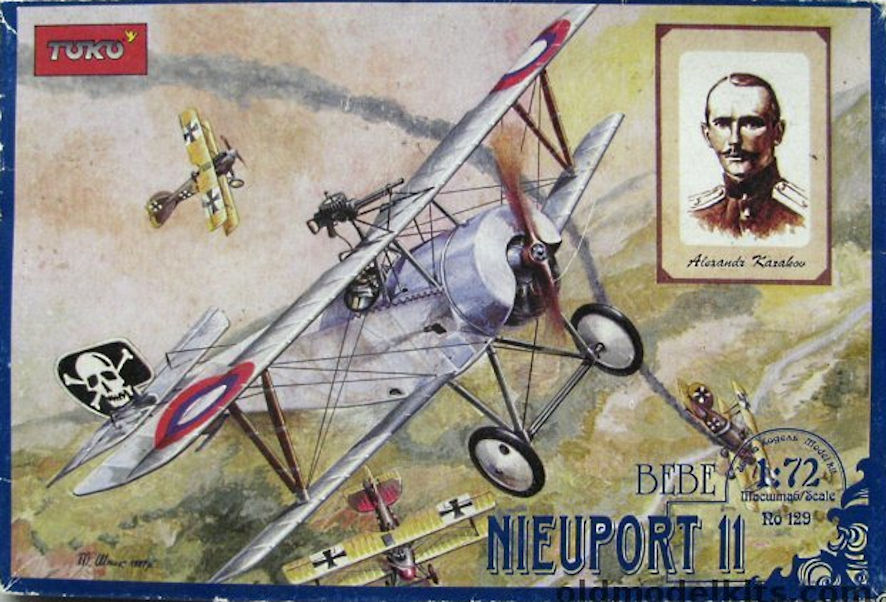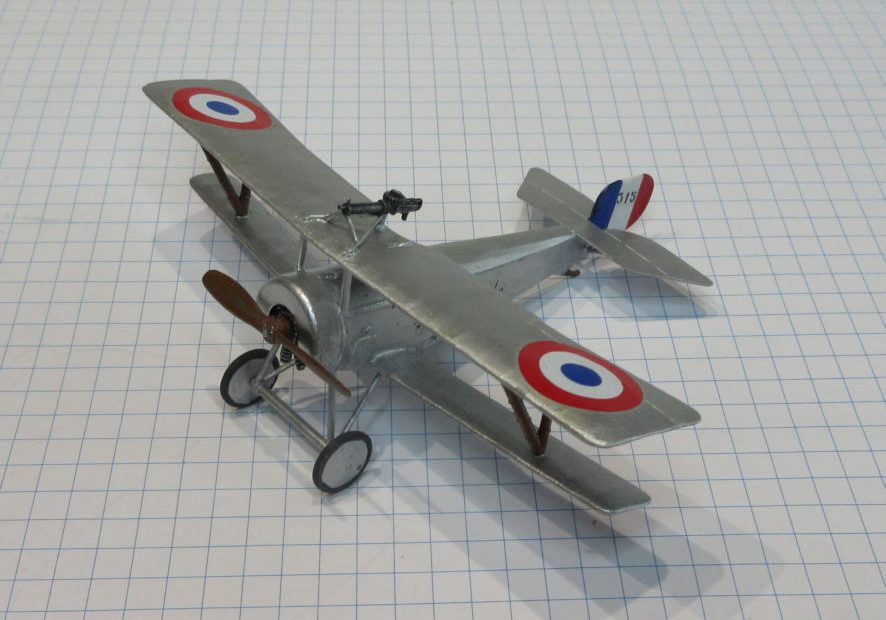The Nieuport 11 was one of the best of the first generation of fighters. It was derived from a racing aeroplane developed before the war and had such potential that it was ordered by both the French and British governments. It entered service in August 1915 and its high speed, excellent manoeuverability and high climbing speed soon helped the Allies overcome the ‘Fokker Scourge’ of the previous few months.
An important feature of the design was the wing arrangement in which the area of the lower wing was only half the area of the upper wing, a feature that was used in the later Nieuport 17 and in German aeroplanes such as the Albatros D.III and D.V.
As the Nieuport 11 flew before the invention of synchronised machine guns its only armament was a Lewis gun mounted above the upper wing outside the propeller arc.
This aeroplane was so successful that it was built in large numbers in Italy, Holland and Russia as well as France and was also flown by the Belgium air service and Britain’s Royal Flying Corps and Royal Naval Air Service.. It was very popular with its pilots and many famous aces started off in it, Bishop, Ball, Navare and Nungesser among them.

As soon as Toko arrived on the scene they brought a new standard to kits of World War I aeroplanes. Other manufacturers had done them before, usually the Sopwith Camels, SE5As, Fokker Dr.1s, all the usual fighters, and usually rather chunky looking too. Often the best way to make World War I aeroplanes look as light and fragile as they really were was to make vacforms, and I wouldn’t wish that on a dog.
Toko was a breath of fresh air with a range of World War I aeroplanes never before seen and with such a lightness in the mouldings that they looked fine and light. Toko has now stopped making kits but their moulds have gone to another Eastern European maker and the people who worked for Toko have started up a new company making the same kinds of kits. We have been very lucky!
This little kit is a joy to put together. The parts are generally well formed though some need a bit of attention to get rid of some of the mounding seams. Many of the parts are extremely fragile so I had to go patiently and carefully so I didn’t break anything, which would have been easy since the plastic is a bit soft. There is a pleasant amount of cockpit detail that can be brought up nicely with a little bit of dry brushing but there is no sign of any instruments or instrument panel. I have no references for what’s in the cockpit of a Nieuport 11 so I had to trust Toko, but it does look a bit odd. There is an uncalled-for lump of plastic on the front edge of the cockpit opening and it took me a while to realise that Toko had moulded the windscreen as though it was part of the fuselage. All you have to do to make yourself happy is cut away the plastic lump and make a little windscreen out of some thin clear plastic.
I’m a little confused about the lower wing on this aeroplane. The kit has it swept back a little but the photograph of the aeroplane I’ve seen shows it straight. I can’t imagine that Toko would have made such a simple error but I have no other material to check which is right. Anyhow, trying to straighten up the wing would have caused all kinds of grief with mounting the top wing so I decided to pretend that there was nothing to worry about. For once the top wing was easy to mount and lined up nicely. Unfortunately, after I’d gone to so much trouble to make sure the narrow track undercarriage on the He178V-1 didn’t cause problems with the way the model sits I forgot with the Nieuport 11, and guess what happened. Such is life!
The kit comes with a choice of five markings, four Nieuport 11s and a Nieuport 16. The first four are all silver so that makes life very easy while the Nieuport 16 is camouflaged and equipped with rockets mounted on the wing struts for shooting down balloons. The Nieuport 16 had a more powerful engine so I don’t know if something should be done to represent that if you were to go for the 16, but since I decided to make a nice French Nieuport 11 I didn’t have to worry about that.
In fact I didn’t worry about much with this kit, I just enjoyed putting it together and I enjoy looking at it, it’s so pretty and petite.

Leigh Edmonds
September 2000
